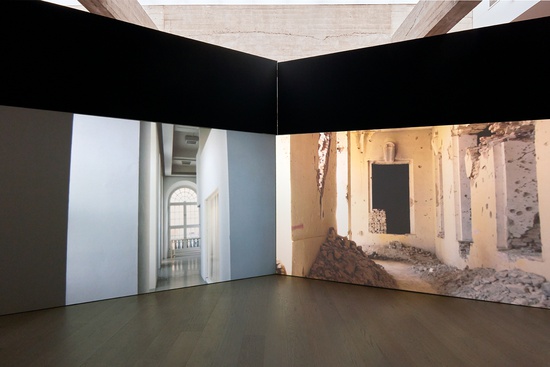A Brief History of Collapses
Mariam Ghani
(2011)
------------------------------------------------
A Brief History of Collapses exploits the uncanny architectural similarity between two buildings constructed two centuries and a continent apart – the Museum Fridericianum built by Simon Louis du Ry in Kassel, Germany in 1779, and the Dar ul-Aman Palace built by Walter Harten in Kabul, Afghanistan in 1929 – to explore both similarities and differences in their histories, myths, uses and contexts. One is a ruin, but was once part of a reformer-king’s project to build a new kind of city; one was a ruin, but is now restored to the purpose for which it was built, as the first public museum in Europe. Each represents a specific moment in which an impulse to open society was crystallized in architecture; and each also represents, to those who know the history (or can read it in the bones of the building) a series of blows delivered to those ideals, which resulted in the collapses of both dreams and buildings. Because Dar ul-Aman deliberately references the period and principles of German neo-classicism, as embodied by the Fridericianum, the two buildings also share similar layouts and details.
The two-channel video installation A Brief History of Collapses therefore sends two cameras on parallel courses through the two buildings, tracking through corridors and rooms and stairwells, past remnants and rubble and residue, each in pursuit of a figure that continually escapes either the frame of the camera or the framework of the architecture. The videos are projected on two screens, hinged like a book, while voiceover narration (so dense and fast that it too occasionally escapes apprehension) winds back and forth from building to building, city to city, past to present, history to myth and back again. Movement and narration are choreographed across both channels, but a different specter is pursued in each place: one camera chases a ghost of the past that can neither be revived nor reconciled, while the other chases an unrealized vision, the possible future that can never be made fully real in the present. In another sense, each building serves to haunt the other: when the Fridericianum, which was once a ruin but has been restored, is juxtaposed with Dar ul-Aman, which remains a ruin, each could be understood as the past or future of the other.



